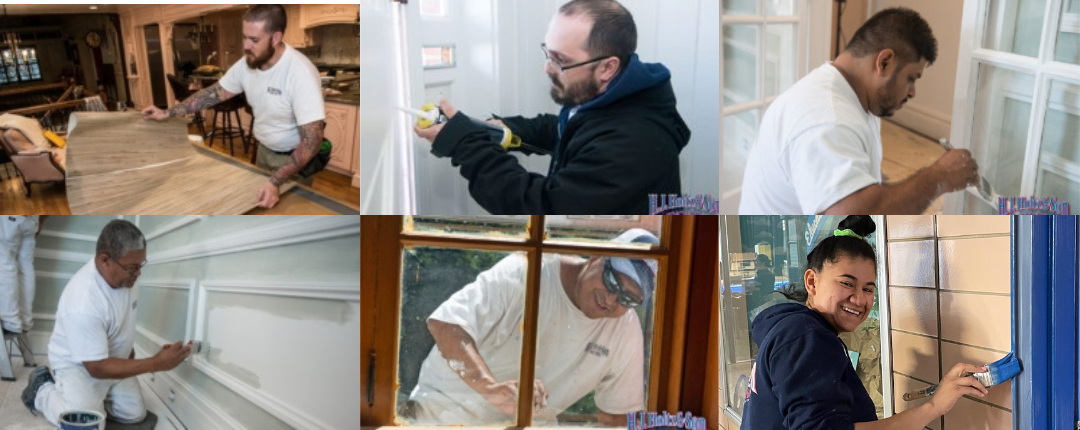H.J. Holtz & Son Production Manager Kelly Kutchey recalls a recent project in which the Holtz team was hired to correct painting problems in a brand-new house.
“The builder hired a painter for cost-efficiency, and we were called later to fix all sorts of issues,” he said. “The painter hadn’t properly prepared the trim for painting by filling in nail holes and caulking; some areas also clearly weren’t primed. Trim work should always be [painted] using a nice brush; this house trim was painted with a thick roller … it looked like it had 40 coats of paint. The homeowner wasn’t happy.”
The Holtz decorative arts team had worked on a project in the house, so the designer suggested the homeowner contact H.J. Holtz & Son to resolve the problems. One benefit of hiring a larger company, Kutchey says, is readily available expertise.
“Smaller companies sometimes want to take on bigger jobs and will cut corners or hire people who don’t really know what they’re doing,” he says. “They don’t always have the proper skills to do a job. We get calls all the time from folks who have something that needs to be fixed. They come to us because we have a reputation for being able to solve painting problems and wallpaper problems.”
Every job has its own specific set of considerations and challenges, Kutchey says, because every wall is different. There might be cracks caused by a settling foundation, nail pops from when the house was built, excessive moisture in the home, and dings and dents caused by everyday life. If surfaces aren’t prepared properly, there’s an increased likelihood that difficulties will develop later.
Common dilemmas with painted walls and ceilings include cracking, bubbling or blistering, and flaking or peeling. Wallpaper can be curling at the edges, separating at the seams, and showing dips or bumps under the surface.
“Customers will call, and we’ll send someone to assess,” he says. “Some situations can be repaired – like if paper is falling off a wall – but sticky paint just has to be redone.”
Most wallpaper issues require removing a wallpaper panel so the underlying issue can be remedied, whether that involves the surface of the wall or reapplying adhesive. Because wallpapers vary in weight and texture, the right adhesive is essential, as is a careful application.
Kutchey says the Holtz team was called recently to investigate why paint wasn’t adhering well to a wall. He discovered three layers of wallpaper underneath the painted surface. “Usually, the reason why [people] paint over wallpaper is because it was too hard to take off in the first place,” he says. “We take whatever we need to take off the walls; sometimes that means going down to drywall or plaster.”
Problems usually can be fixed, but that remedy comes with a cost. “It’s always better to take the time at the beginning to do it right,” he says. “It’s going to double your cost to call us in to fix something that could have been managed at the start of a project.”

